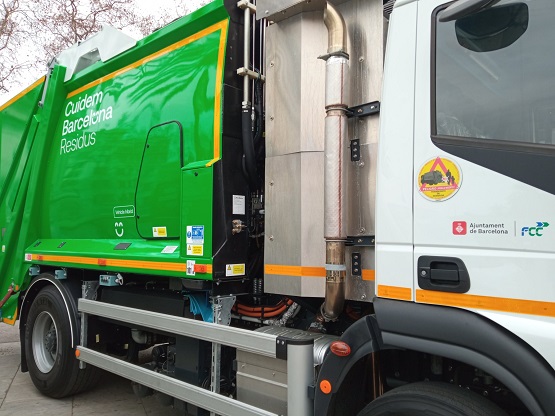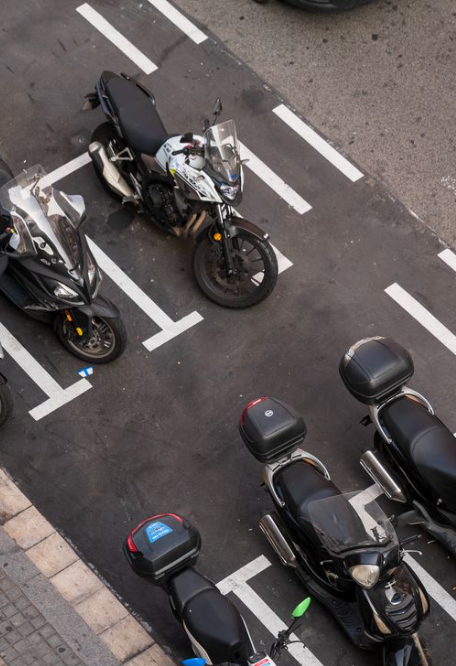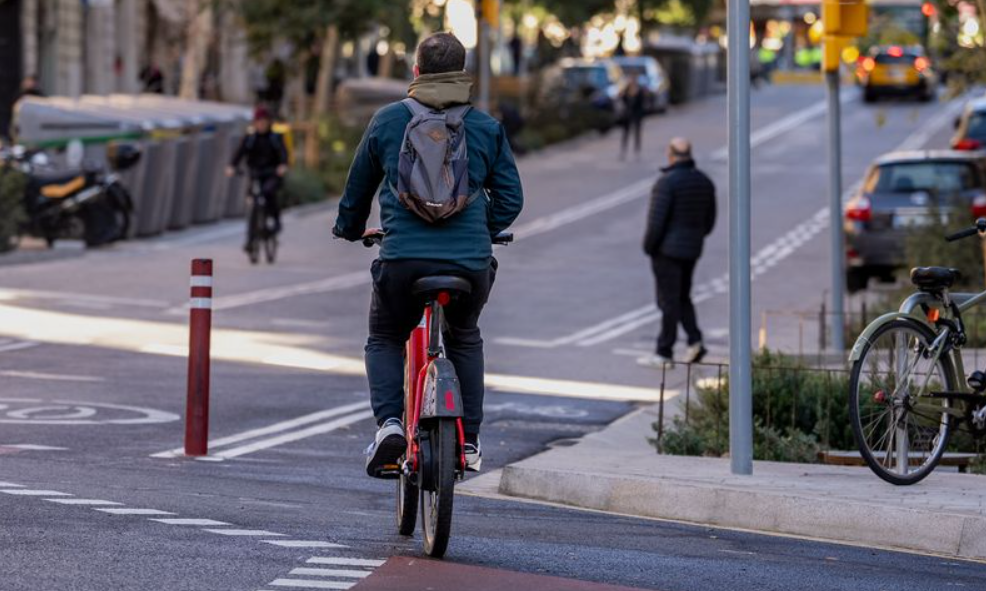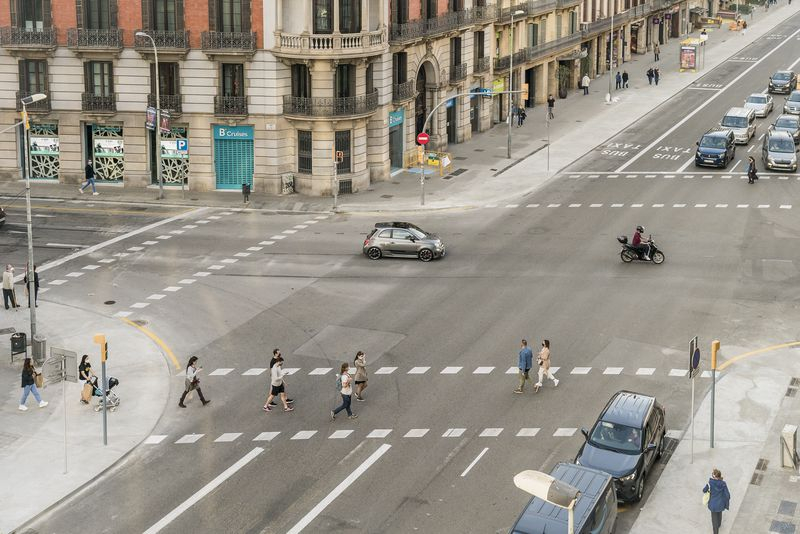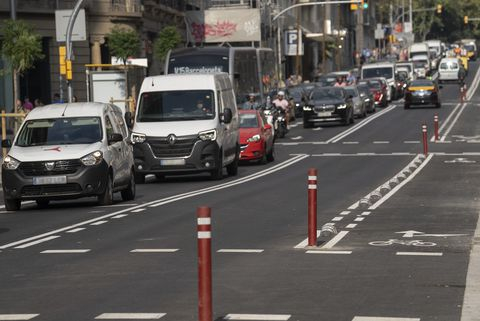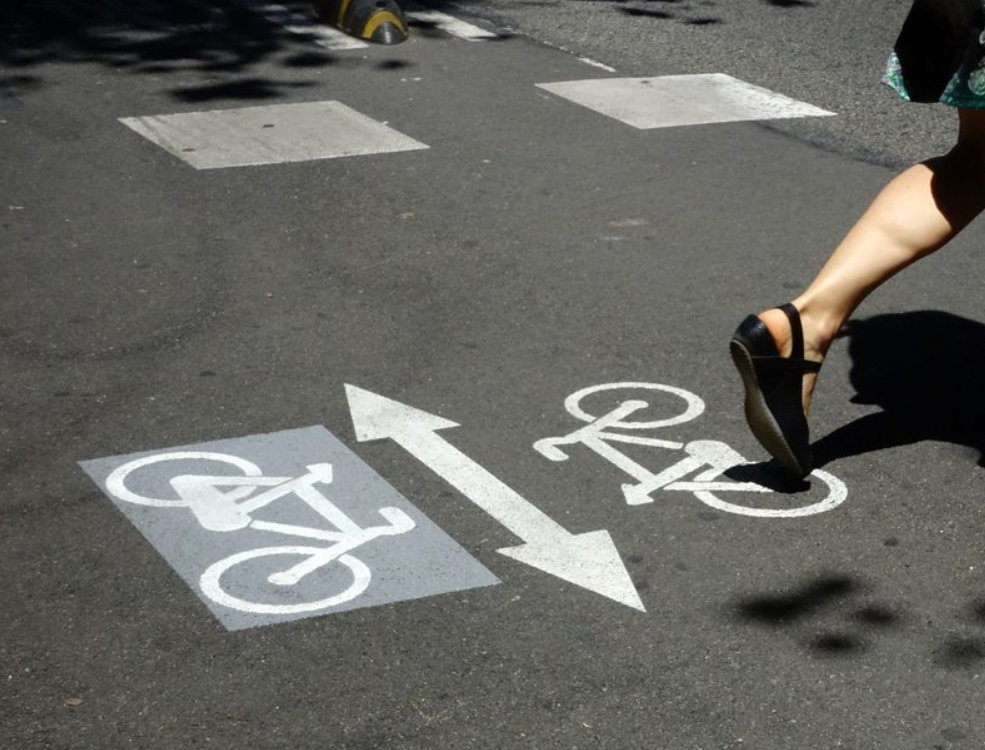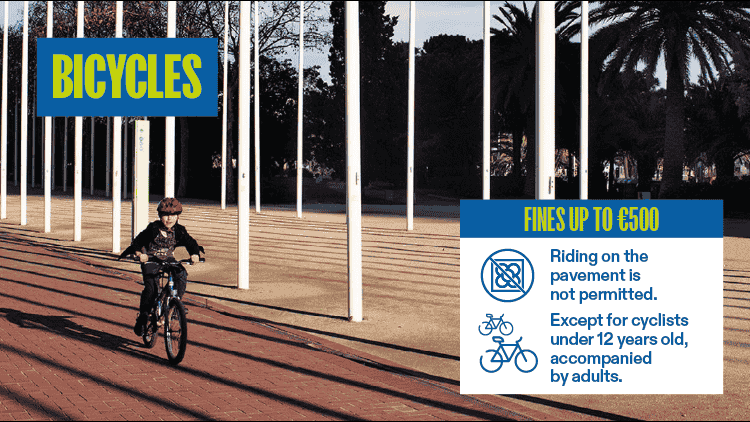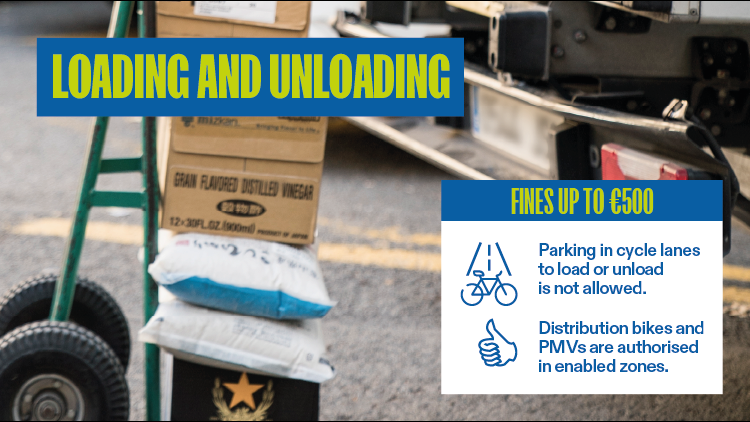Safe mobility
Infringing regulations leads to fines and puts peaceful coexistence at risk. Making the city a safer place
Infringing regulations leads to fines and puts peaceful coexistence at risk. Making the city a safer place
Everyone has the right to move around the city. And to do so in safety. And so, if we know and follow the regulations, we can make the city a friendlier and safer place.
More than 90% of people seriously injured in traffic accidents belong to the most vulnerable groups: motorcyclists, pedestrians, cyclists and people who ride electric scooters.
Our goal for 2050 is Vision 0: zero deaths and zero serious injuries with lifelong consequences.
For this reason, we are taking action on all the factors involved in road safety, as well as raising awareness about the regulations for the various modes of transport.
The Byelaw on Pedestrian and Vehicle Traffic (OCVV) regulates traffic in the city of Barcelona in accordance with the regulatory framework applicable to Spain as a whole. Amendments to the byelaw to regulate personal mobility vehicles (PMVs) and their use around the city and protect the use of pavements for pedestrians, while encouraging the use of sustainable and active means of transport, were approved in November 2024.
Find out about the regulations and help us to make our journeys safer for ourselves and for all city residents.
Traffic ordinance Open in a new window Mayor's proclamation Open in a new window Informative leaflet (PDF) Open in a new window
Sanctions
On a motorbike
- Match your speed to the road you are in. Remember that over half of the city’s streets have a speed limit of 30 km/h.
- Be careful when turning or changing lane, indicating your intentions and without zigzagging between vehicles.
- Always wear a fastened, standardised crash helmet of the right size, and additional protection.
- Never ride on pavements. Motorcycles are not allowed on pavements, platforms or pedestrian paths with their motor running. Access is only allowed when the engine is switched off and the seat unoccupied. The engine may only be switched on to help with moving uphill, provided the vehicle does not access pedestrian paths.
- It is prohibited to encroach on bike lanes or bus lanes.
- Park in the spaces designated on road surfaces and in underground car parks. When it is not possible to park in the street, and where there is not specific signage prohibiting it, you can park on the pavement:
- If the pavement is between 3 and 6 metres wide, you can park parallel to the pavement (at a minimum of 0.5 metres from the edge of the kerb) and between tree pits, without blocking car park exits, litter bins or waste containers, and while keeping at least 2 metres away from zebra crossings and bus stops. You must also leave 3 metres for pedestrians to pass.
- If the pavement is more than 6 metres wide, motorcycles can park side by side and diagonally, provided that there is at least 3 metres for pedestrians to pass.
- Parking on the pavement near schools and hospitals is not permitted.
- Parking is also expressly prohibited in spaces next to bicycle parking areas, on pedestrian crossings, on cycle lanes and anywhere that interferes with the use of waste containers.
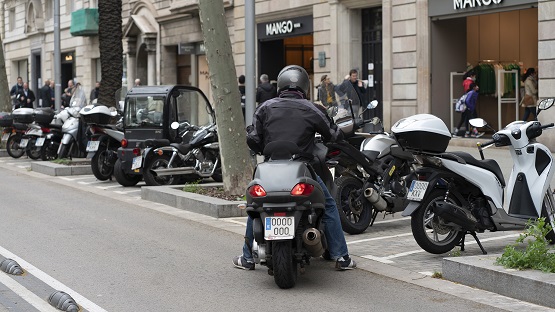
Scooters
If you’re using a personal mobility vehicle
A helmet must be worn, and the vehicle must be fitted with front and rear lights.
Under no circumstances can you ride on pavements or in other pedestrian areas. You can ride in the following places:
- Cycle lanes on the road, at a maximum speed of 25 km/h, with the obligation to slow down at pedestrian crossings.
- Cycle lanes on the pavement, at a maximum speed of 10 km/h.
- Streets with no kerb, at a maximum speed of 20 km/h, and pedestrian areas where vehicles are allowed to pass, at a maximum speed of 10 km/h.
- In the road in 30 km/h areas, at a maximum speed of 25 km/h.
- Parks, up to a maximum speed of 10 km/h.

By bike
- Respect traffic lights, signage and pedestrian crossings.
- You must take more care at pedestrian crossings without traffic lights.
- Make use of all safety elements (bell, lights and reflectors if you’re riding at night). Use of a helmet is recommended. And remember that a helmet is mandatory for children under the age of 16.
- Use road surfaces, bike lanes, roads with 30 km/h speed limits and specially conditioned areas.
- Neither bicycles nor PMVs may ride on pavements. This does not apply to children under 12 or to their accompanying adults, who are therefore permitted to cycle on the pavement, and children under 14 years can similarly ride their bicycles on streets without a cycle lane. Adults carrying children can also ride on the pavement on streets without a cycle lane.
- Do not carry objects that make it hard to manoeuvre or reduce other vehicles’ visibility.
- Do not use your mobile phone or listen to earphones or headphones while riding.
- Do not pedal without holding the handlebars, do not zigzag and do not hold on to other vehicles in motion.
- Park your bike preferably in the stands or the underground parking designed for this vehicle.
Walking
- Always walk on the pavement.
- Obey traffic lights.
- Always cross the road at pedestrian crossings
- Take more care at pedestrian crossings without traffic lights.
- Pay particular attention to vehicles that are turning at junctions.
- Don’t walk or stop in cycle lanes. And always cross them at the indicated zones where you have right of way.
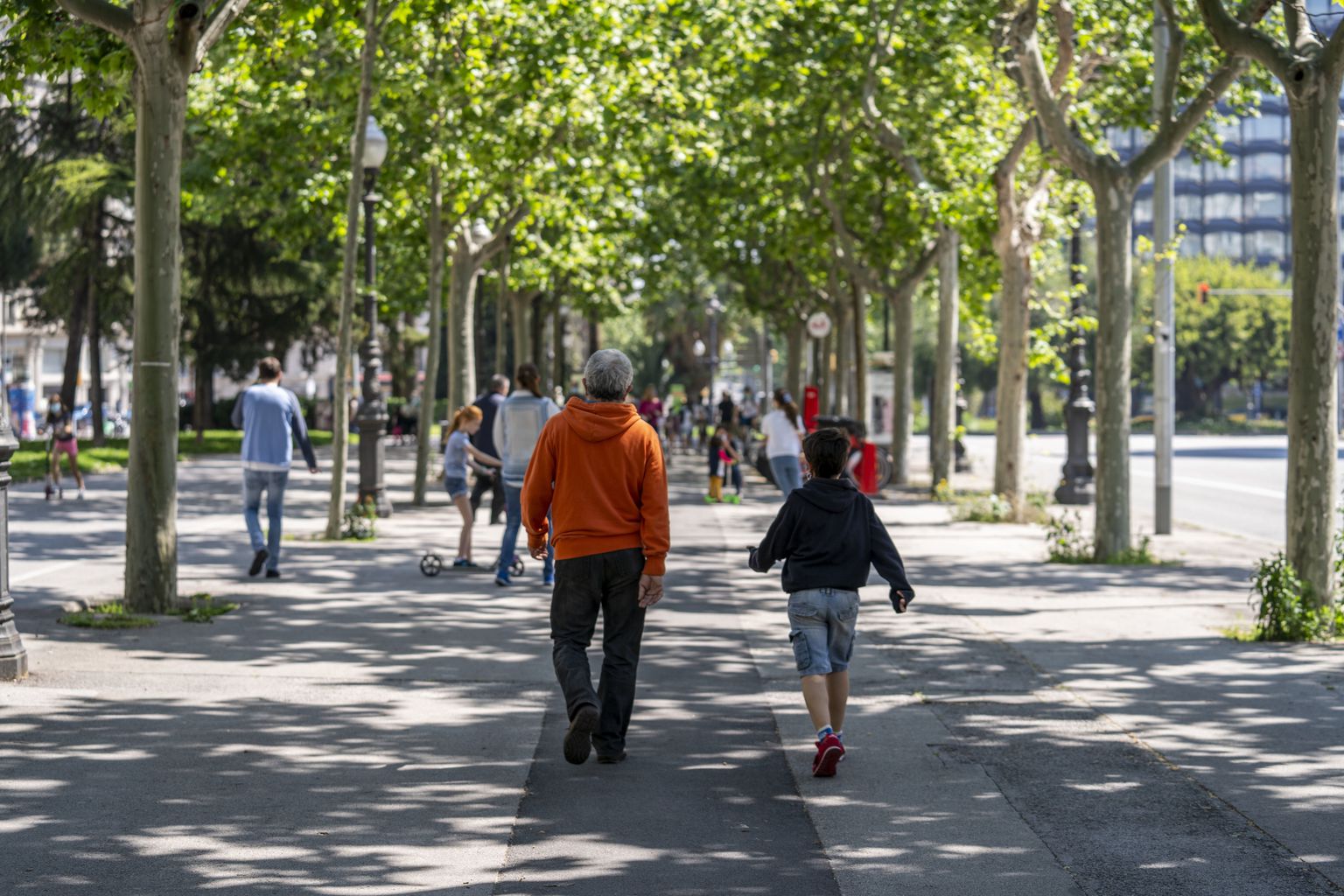
Drive a car, van or lorry
- Match your speed to the road you are in. Remember that over half of the city’s streets have a speed limit of 30 km/h.
- Always indicate when changing lane and check any blind spots before turning.
- You should be extra cautious with motorcycles, as they are the most vulnerable vehicles you share spaces and speeds with.
- Do not use pedestrian areas and take due care when entering or leaving parking areas.
- It is prohibited to encroach on bike lanes or bus lanes. Do not stop on double yellow lines or in bus lanes or bike lanes. Always park in designated spaces, and if you cannot find one, in an underground car park. Do not stop in pedestrian areas painted on the road. This puts the most vulnerable in danger.
Sanctions
Electric scooters and other personal mobility vehicles (PMV)
| Punishable conduct | Amount of the fine |
|---|---|
| Riding on the pavement is forbidden | €500 |
| Carrying passengers is forbidden | €100 |
| Helmet obligatory | €100 |
| Front and back lights obligatory | €100 |
| Maximum speed of 25 km/h | Up to €500 |
| Speed limit of 10 km/h in bike lanes located on pavements | Up to €500 |
| Riding on streets with speed limits of 50 km/h is forbidden | €500 |
| Use by people under 16 years of age is forbidden. | €200 |
| Riding with blood alcohol levels above the legal limit, or under the influence of drugs, is forbidden | €500 |
Bikes
| Punishable Conduct | Penalty Amount |
|---|---|
|
Riding on the pavement is forbidden Exceptions:
|
500 € |
Bikes, electric scooters and other personal mobility vehicles (PMV)
| Punishable Conduct | Penalty Amount |
|---|---|
| Obligation to get off the vehicle where there are large numbers of pedestrians | €100 |
| Attaching vehicles to trees, traffic lights, benches, waste containers or any other type of urban furniture is forbidden | €100 |
Loading and unloading
| Punishable Conduct | Penalty Amount |
|---|---|
| Parking in bike lanes for loading or unloading is forbidden for all vehicles | €200 |
Motorcycle parking
| Punishable Conduct | Penalty Amount |
|---|---|
| Parking in spots that block entrances to schools or hospitals is forbidden | €100 |
| Parking on pavements less than 3 metres wide is forbidden | €50 |
| Parking by pedestrian crossing kerbs is forbidden | €100 |
| Parking in spots that block access to waste containers is forbidden | €50 |
| Parking in bike lanes is forbidden | €100 |
| Parking in spaces adjacent to bike parking is forbidden | €100 |
Signage for blind spots
Delivery vehicles, urban and school buses, and heavy goods vehicles will be able to carry such signage on a voluntary basis. The aim is to convey to other road users, especially the most vulnerable users in urban areas, the importance of avoiding spots where they cannot be seen by the drivers of these vehicles.
